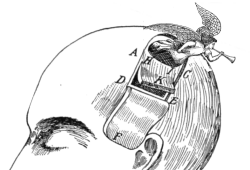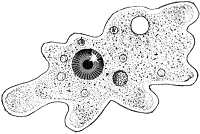 Is computer art the same as human art? This piece argues that there is no real distinction; I don’t agree about that, but I sort of agree that in some respects the difference may not matter as much as it seems to. Oliver Roeder seems to end up by arguing that since humans write the programs, all computer art is ultimately human art too. Surely that isn’t quite right; you wouldn’t credit a team that wrote architectural design software with authorship of all the buildings it was used to create.
Is computer art the same as human art? This piece argues that there is no real distinction; I don’t agree about that, but I sort of agree that in some respects the difference may not matter as much as it seems to. Oliver Roeder seems to end up by arguing that since humans write the programs, all computer art is ultimately human art too. Surely that isn’t quite right; you wouldn’t credit a team that wrote architectural design software with authorship of all the buildings it was used to create.
It is clearly true that we can design software tools that artists may use for their own creative purposes – who now, after all, creates graphic work with an airbrush? It’s also true that a lot of supposedly creative software is actually rather limited; it really only distorts or reshuffles standard elements or patterns within very limited parameters. I had to smile when I found that Roeder’s first example was a programme generating jazz improvisation; surely the most forgiving musical genre, or as someone ruder once put it, the form of music from which even the concept of a wrong note has been eliminated. But let’s not be nasty to jazz; there have also been successful programs that generated melodies like early Mozart by recombining typically Mozartian motifs; they worked quite well but at best they inevitably resembled the composer on a really bad day when he was ten years old.
Surely though, there are (or if not there soon will be, what with all the exciting progress we’re seeing) programs which do a much more sophisticated job of imitating human creativity, ones that generate from scratch genuinely interesting new forms in whatever medium they are designed for? What about those – are their products to be regarded as art? Myself I think not, for two reasons. First, art requires intentionality and computers don’t do intentionality. Art is essentially tied up with meanings and intentions, or with being about something. I should make it clear that I don’t by any means have in mind the naive idea that all art must have a meaning, in the sense of having some moral or message; but in a much looser sense art conveys, evokes or yes, represents. Even the most abstract forms of visual art or music flow from willed and significant acts by their creator.
Second, there is a creator; art is generated by a person. A person, as I’ve argued before, is a one-off real physical phenomenon in the world; a computer program, by contrast, is a sort of Platonic abstraction like a piece of maths; exactly specified and in some sense eternal. This phenomenon of particularity is reflected in the individual status of works of art, sometimes puzzling to rational folk; a perfect copy of the Mona Lisa is not valued as highly as La Gioconda herself, even though it provides exactly the same visual experience (actually a better one in the case of the copy, since you don’t have to fight the herds of tourists in the Louvre and peer through bullet-proof glass). You might argue that a work of computer art might be the product, not of a program in the abstract, but of a particular run of that program on a particular computer (itself necessarily only approximating the ideal of a Turing machine), and so the analogy with human creators can be preserved; but in my view simply being an instance of a program is not enough; the operation of the human brain is bound up in its detailed particularity in a way a program can never be.
Now those considerations, if you accept them, might make you question my initial optimism; perhaps these two objections mean that computers will never in fact produce anything better than shallow, sterile permutations? I don’t think that’s true. I draw an analogy here with Nature. The natural world produces a torrent of forms that are artistically interesting or inspiring, and it does so without needing intentionality or a creator (theists, my apologies, but work with me if you can). I don’t see why a computer program couldn’t generate products that were similarly worthy of our attention. They wouldn’t be art, but in a sense it doesn’t matter: we don’t despise a sunset because nobody made it, and we need not undervalue computer “art” either. (Interesting to reflect in passing that nature often seems to use the same kind of repetition we see in computer-generated fractal art to produce elegant complexity from essentially simple procedures.)
The relationship between art and nature is of course a long one. Artists have often borrowed natural forms, and different ages have seen whatever most suited their temperament in the natural world, whether a harmonious mathematical regularity or the tortured spirituality of the sublime and the terrible. I think it is quite conceivable that computer “art” (we need a new word – what about “creanda”?) might eventually come to play a similar role. Perhaps people will go out of their way to witness remarkable creanda in much the way they visit the Grand Canyon, and perhaps those inspiring and evocative items will play an inspiring and fertilising role for human creativity, without anyone ever mistaking the creanda for art.

 A digital afterlife is likely to be available one day, according to Michael Graziano, albeit not for some time; his
A digital afterlife is likely to be available one day, according to Michael Graziano, albeit not for some time; his  Are there units of thought? An interesting conversation
Are there units of thought? An interesting conversation